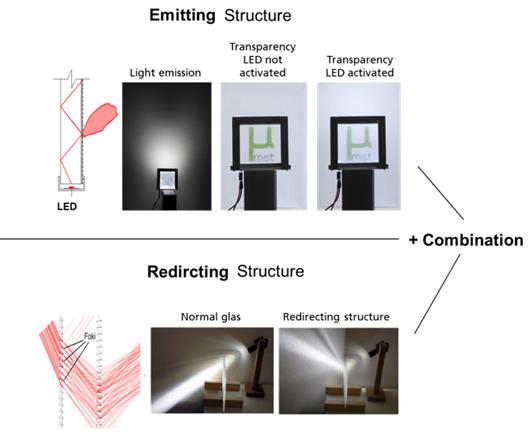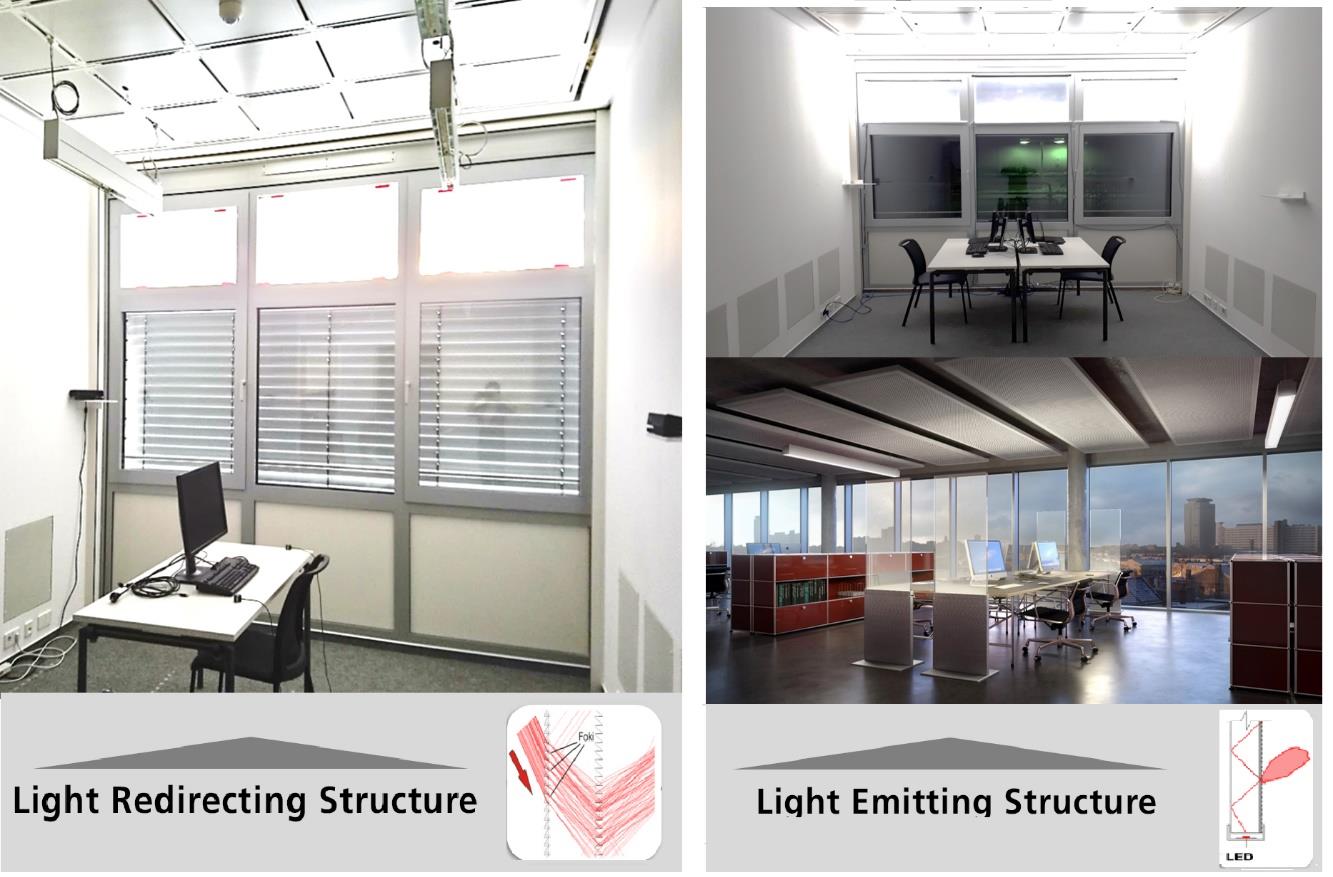Brief Concept Description
In this solution, micro-structured optical components are integrated in the façade with applications in daylighting and artificial lighting. Due to the use of these components, improvements in energy efficiency, lifecycle balance and quality of stay in buildings are expected.
Two micro-optical structures were developed: a light redirecting and a light emitting structures (Figure 64), which can also be combined:
- The light emitting structure is applied to a surface of a transparent pane and is coupled with LEDs located on the edge of the pane. The light is emitted only to the interior side of the building and the element remains transparent;
- The light redirecting structure is optimized for directing glare-free daylight into the depth of the room. Such structure is applied to both sides of a transparent pane.

Figure 64. Schematic sketches and laboratory prototypes of the two new micro-optic structures. A functional combination of both structures is possible (Reference: AG MST, TU-Dortmund).

Figure 65. Integration of light redirecting and light emitting structures into vertical façades (left and upper right image). Integration of light emitting structure into luminaires for task lighting (lower right image).
Architectural and Technological Integration into the Envelope
The two optical structures can be integrated into the building envelope in different ways. The integration of the redirecting structure into vertical façades allows to bring sunlight into the depth of the room for different positions of the sun without changing the orientation or angle of the optical structures. In roof applications, the redirecting structures allows to illuminate high and narrow rooms like atria and light wells.
With the integration of the light emitting structure in windows and roof lights, the building envelope provides access to both artificial and natural light, so that conventional artificial lighting systems can be partially replaced. The light emitting structure can also be employed in new types of transparent workplace luminaires (Figure 65, lower right image).
From an architectural point of view, the system is easy to integrate in existing planning as it does not change the design of the façade and the optical structures reduce the daylight input and view only to a lesser extent. Furthermore, as the conventional artificial lighting system can be resized or even removed, there is more freedom in designing the ceiling with also potential cost savings.
Integration into the Building: System and Comfort
To use the light emitting structure, the LEDs have to be connected to the power supply of the building and therefore the integration of cables into façade and windows is necessary. For this reason, an electrician has to be on-site during the installation of the façade. With the use of presence and photo sensors, a suitable light management can reduce the energy consumption and improve the comfort of the occupants. The artificial light can be indeed adjusted to the daylight in terms of luminous flux and colour temperature.
Further Reading
Helmut F.O. Müller: Micro-Optical Structures for Daylighting & LED Systems, World Renew. Energy Congress XVI, Febr. 2017
Jakubowsky M., Neyer A.: Optimized design of daylight redirection microstructures combined with planar micro structured light sources for high efficient room lighting integrated in building façades, CISBAT Sept. 2017, Lausanne, Switzerland
Website: Fraunhofer-Institut für Bauphysik IBP